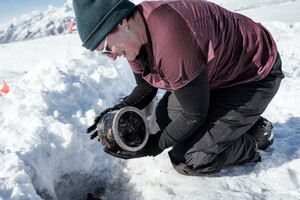Films from them have already been submitted for examination.

Researcher Griffin Post, who led the Teton Gravity expedition Research found cameras left by explorer Bradford Washburn 85 years ago on the Walsh Glacier in Canada, CNN reports. A total of three cameras were found, two of them preserved film, which was sent for examination.
In June 1937, Washburn and his partner Robert Bates set out to climb Mount Lukenia – the third highest mountain in Canada at 5,240 meters. and at that time the last unruly peak in North America. It is part of the Kluan National Park and Reserve in the traditional territory of the Kluani indigenous people.
Also read: Kilimanjaro glaciers may disappear completely by 2050
They were supposed to start and finish their ascent on the Walsh Glacier, but that didn't happen. Due to extreme weather, slush formed on the glacier, the plane that took the researchers there got stuck and the pilots refused to return for them. As a result, researchers had to make the ascent and descent on foot, and were forced to leave their belongings, including heavy cameras.
Now Post and his team have discovered those cameras, along with other equipment. In order to do this, the researchers had to thoroughly prepare for the expedition. For 1.5 years, they went through old documents, journals and letters to determine the place where the cameras were left. But the search was complicated by the fact that the glacier is moving, so the locations on it change.
Post and his colleagues were confident that they would be able to find the cache because it appeared to be quite large, but the first six days of searching did not yield any result Post admits that until the last morning they were already prepared for the fact that the search would end in failure.
With four hours left before the end of the expedition, glaciologist Dorota (Dora) Medzhitska from the University of Ottawa put forward a theory that the group was looking for a hiding place in the wrong place. She joined the study two weeks before the search began and was part of the team that originally planned the route. Once on the glacier, Medzhitska assumed that the hiding place should be located a little lower.
Scientists know that glaciers grow. This usually occurs at a rate of 100-200 meters per year, but Walsh Glacier was growing at a rate of one kilometer per year at its peak. The group moved two kilometers away from the starting point of the search, and one of the expedition members noticed a canister with fuel. And then they found other things that remained from the hiding place.
Related video
Let us remind you that climate changes on Earth lead to the fact that summers are becoming hotter and hotter, which leads to rather unpleasant consequences. Yes, the glaciers of the Alps melted this summer at a rate that exceeds all values recorded so far.




